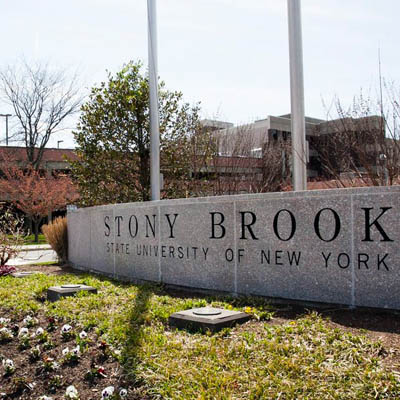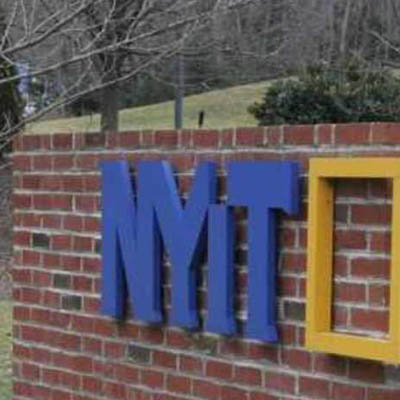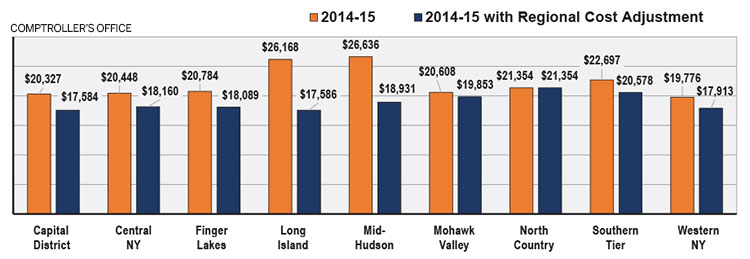Why is there controversy over Common Core?
Many educators initially supported the Common Core standards, saying that if implemented appropriately, they had the potential to improve student learning. In New York and elsewhere, testing associated with the Common Core has drawn strong criticism, with some parents arguing the exams are flawed and age-inappropriate and do not provide a valid diagnostic tool. Others have said passing rates set for the exams are unrealistic. Opponents of the tests also say they are not properly aligned with the curriculum, and that teachers are not allowed to discuss the test content with parents or even colleagues.
Some also have argued that a Common Core-aligned curriculum is a federal imposition, and that state and local educational standards work best.
Proponents, such as High Achievement New York, a coalition of education, business and civic groups, say that tests tied to the Common Core standards are a solid measure to evaluate progress toward students’ college and career readiness.
The tests are considered an annual “checkup,” they say, to ensure all kids are making progress, provide teachers and schools more information, and offer a common measure that can be used to help close the achievement gap affecting minority students.
Many education experts have said New York State’s Education Department rushed the standards into place too hurriedly in 2010, in part because federal authorities tied nearly $700 million in “Race to the Top” funds to Common Core implementation. Those same experts have said that Gov. Andrew M. Cuomo contributed to the controversy by insisting that the state increase the weight of students’ scores in teacher job-performance evaluations.
How do the tests affect students and teachers?
The state Board of Regents, which sets education policy, in December 2015 passed a four-year moratorium that means Common Core test scores will not be used in a punitive way against students or in teachers’ job ratings. The moratorium is slated to last until at least the 2019-20 school year.
The four-year moratorium was approved by the Regents with the stipulation that teachers continue getting job ratings on an advisory basis.
Opt-out supporters say the moratorium doesn’t go far enough, and they are seeking repeal of the state’s teacher evaluation law and other education reforms.
How have the tests changed?
In response to educators’ and parents’ concerns, the Education Department in 2016 reduced the number of test questions and said tests will be untimed. As part of the state’s contract with a new company to create the tests, teachers had a far greater role in developing the 2016 test questions.
The new company — Questar Assessment Inc., a Minneapolis-based firm — was hired by the state Education Department in 2016. The 2016 exams, however, continue to use questions originally developed by Pearson Education, the London-based firm that produced the state’s tests since 2011.
Pearson, like the McGraw-Hill company that preceded it in publishing New York’s standardized exams, encountered withering criticism from teachers and parents for what they described as poorly written questions and technical gaffes in test administration.
Education Department officials said the state’s new $44 million, five-year contract with Questar calls for teachers to have a far greater role in test development.
What has happened to New York students’ test scores since implementation of the Common Core standards?
Passing rates rose on both tests last year over 2015 scores, though more in English language arts than in math, the state Department of Education has said.
Among about 900,000 students who took the exams, 37.9 percent scored at levels of proficiency on the ELA, up 6.6 percentage points, and 39.1 percent on the math test, up 1 percentage point. The math scores, however, exclude thousands of accelerated students who decided to take the high school Regents algebra exam rather than the eighth-grade math test.
Twenty-one percent of students statewide in grades three through eight eligible to take Common Core tests boycotted the exams in April, the department had confirmed but an exact number was not reported. News accounts showed that about 178,000 students statewide boycotted the exams.
When compared with students’ test scores before implementation of Common Core, the difference is stark. Since the rollout of the more rigorous tests, overall scores on state tests have plunged.
Statewide, the percentage of children in grades 3-8 rated proficient or better in English dropped from 55.1 percent in 2012 to 31.1 percent in 2013. Math scores of 64.8 percent rated proficient or better in 2012 fell to 31 percent in 2013.
What are the consequences for a school with a high number of test refusals?
State Education Department officials have said that a district’s failure to meet the federal requirement of 95 percent participation on standardized tests, if not corrected, could result in penalties — including partial loss of federal Title I aid, used for academic remediation.
To date, the department has not imposed fiscal sanctions on a district because of failure to meet participation requirements on state tests.
It is unclear if the Trump administration will impose any consequences on school systems with a high number of test refusals. The administration has focused on other transformative changes in public education such as pushing for expanded school choice, taxpayer-funded vouchers, and more funding for charter schools, setting the stage for high-profile battles with public education advocates and teacher unions.
Is Common Core here to stay?
Some local leaders say yes, that there is not enough support at the federal and/or state levels of government to force an end to the Common Core standards.
Former President Barack Obama in 2015 authorized returning control of how to improve troubled schools and districts to states and local systems.
President Donald Trump and U.S. Secretary of Education Betsy DeVos are both fierce critics of Common Core. But experts say they have little power to rescind the standards that have been set by the individual states. Currently, 42 states and the District of Columbia abide by the Common Core.
In New York, the Board of Regents has modified its stances. In past years, a majority of board members enthusiastically supported higher academic standards and other reforms, but now there is a growing reluctance. Betty Rosa’s selection as Regents chancellor in March 2016 marked a dramatic shift in tone for the 17-member panel.
Emily DeSantis, a spokesperson for the Department said that “Commissioner (MaryEllen) Elia has traveled more than 50,000 miles, crisscrossing the state listening to the concerns of parents and teachers. As a result, NYSED made significant changes to the exams by reducing the number of questions, increasing teacher involved in test development and making them untimed. It’s up to parents to decide if their children should take the tests and we want them to have the all the facts so they can make an informed decision.”
Activists say they will continue their campaign and the state cannot ignore the large number of test refusals.
–Compiled by Joie Tyrrell











 68%
68%
 54.5%
54.5%
 32.2%
32.2%



































